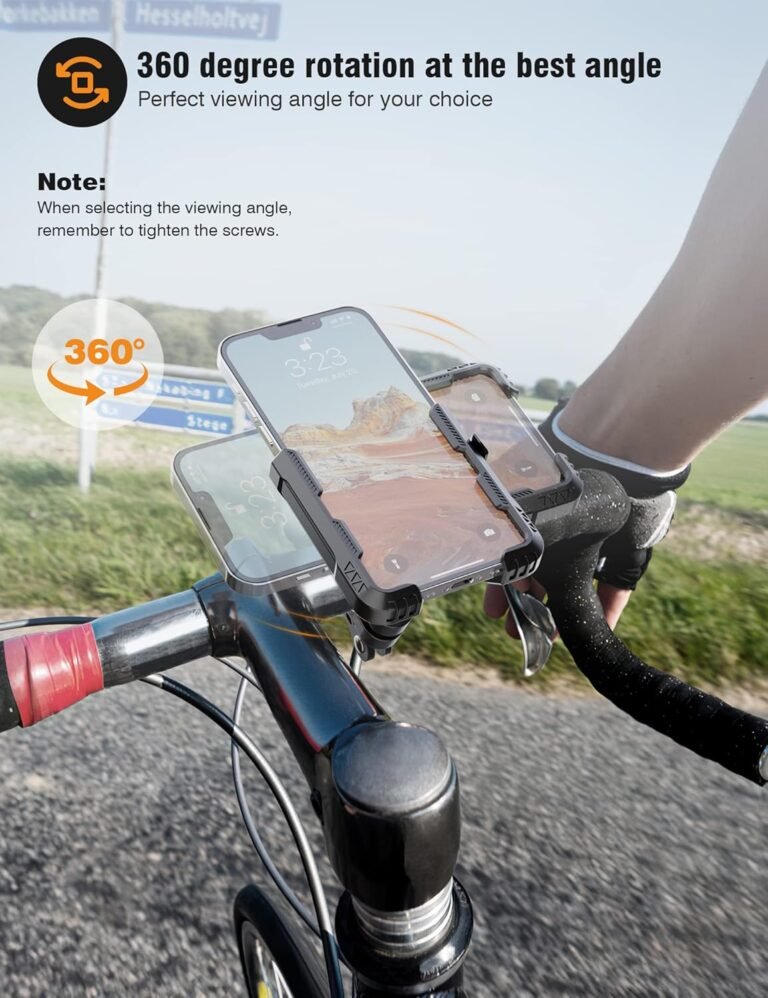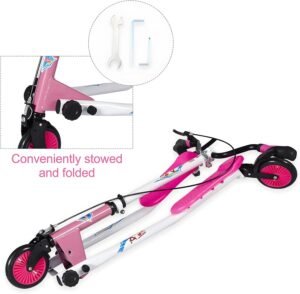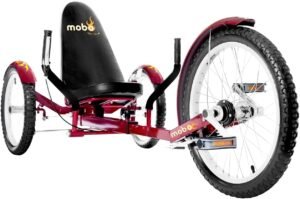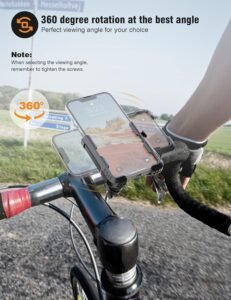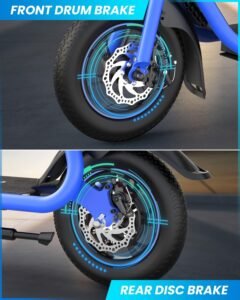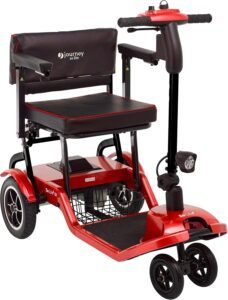
Are you an avid scooter enthusiast or simply looking to try out this trendy mode of transportation? Regardless of your level of experience, one thing is certain – safety should always be your top priority. With the increasing popularity of scooters, it is becoming increasingly important to invest in the right safety gear to protect yourself while on the road. In this article, we will explore a variety of safety gear options available for scooter riders, ranging from helmets to knee pads, and provide a comprehensive comparison to help you make an informed decision. So, strap on your helmet and let’s take a closer look at the world of safety gear for scooters!

This image is property of pixabay.com.
Check out our product reviews!
Helmet
A helmet is one of the most crucial pieces of safety gear when it comes to riding a scooter. It protects your head from potential injuries in the event of a fall or collision. There are various types of helmets available, and choosing the right one is essential for your safety.
Types of Helmets
Here are some common types of helmets to consider:
-
Full-face Helmet: This type of helmet provides the most protection as it covers your head, face, and jaw. It is ideal for high-speed riding or if you prefer maximum safety.
-
Open-face Helmet: Also known as a three-quarter helmet, it covers your head and sides but leaves your face exposed. It offers good visibility and ventilation while still providing protection to the crucial areas.
-
Half Helmet: This helmet covers only the top half of your head and offers minimal coverage. While it is lightweight and allows better airflow, it may compromise safety compared to other helmet types.
How to Choose the Right Helmet
When selecting a helmet, consider the following factors:
-
Fit: A properly fitting helmet is vital for safety. It should snugly sit on your head without any uncomfortable pressure points. Measure your head’s circumference just above the eyebrows and choose a helmet size accordingly.
-
Certification: Look for helmets that meet safety standards like the Department of Transportation (DOT) certification in the United States or the European standard (ECE 22.05). These certifications ensure that the helmet meets minimum safety requirements.
-
Comfort: Opt for a helmet with adequate padding and ventilation to ensure comfort during longer rides. Adjustable chin straps and removable liners can also enhance the overall comfort level.
Importance of Helmet Fit
The fit of your helmet plays a vital role in its effectiveness. A helmet that is too loose may come off during a fall, while a helmet that is too tight can cause discomfort or even headaches. An ideal fit ensures that the helmet stays securely in place and provides optimal protection.
Helmet Safety Standards
Helmets that meet specific safety standards are designed to offer superior protection. The Department of Transportation (DOT) certification in the United States ensures that the helmet meets minimum safety criteria for impact absorption, penetration resistance, and strap strength. Additionally, the European standard (ECE 22.05) guarantees similar safety requirements for helmets sold in Europe. Always look for these certifications when purchasing a helmet for scooter riding to ensure your safety.
Knee Pads
Knee pads are essential safety gear that protects your knees from injuries in case of a fall or accident while riding a scooter. Understanding the various types of knee pads available and choosing the right ones is crucial for your safety.
Types of Knee Pads
Consider these different types of knee pads:
-
Hard-shell Knee Pads: These knee pads feature a rigid outer shell made of durable plastic or composite materials. They offer excellent protection against hard impacts and abrasions.
-
Soft-shell Knee Pads: Soft-shell knee pads are made of flexible materials like foam or gel. They provide good impact resistance and are more comfortable for extended use. However, they may not offer as much protection as hard-shell knee pads.
-
Strapless Knee Pads: Strapless knee pads, also known as slip-on knee pads, have a sleeve-like design that easily slips on over your knees without any straps. They are simple to put on and take off, but they may not be as secure or adjustable as strapped knee pads.
How to Choose the Right Knee Pads
Consider the following factors when selecting knee pads:
-
Protection Level: Assess your riding style and the potential risks involved to determine the level of protection you require. If you frequently ride on challenging terrains or perform tricks, opt for hard-shell knee pads for maximum protection.
-
Comfort and Fit: Look for knee pads that fit snugly around your knees without restricting your movements. Adjustable straps or closures can ensure a secure and comfortable fit.
-
Durability: Choose knee pads made of high-quality materials that can withstand regular use and potential impacts. Reinforced stitching, impact-resistant shells, and durable fabrics contribute to the longevity of knee pads.
Importance of Knee Pad Fit
Proper knee pad fit is crucial for their effectiveness. Ill-fitting or loose knee pads may shift or fall off during a fall, leaving your knees vulnerable to injuries. On the other hand, excessively tight knee pads can restrict blood flow or cause discomfort. Select knee pads that provide a secure and comfortable fit to ensure adequate protection during scooter rides.
Knee Pad Safety Features
Many knee pads come with additional safety features that enhance their protective capabilities:
-
Padding: Look for knee pads with thick padding to absorb impacts and provide cushioning for your knees.
-
Anti-Slip Materials: Knee pads with anti-slip materials or grip patches on the inner surface help prevent them from sliding or shifting during rides.
-
Ventilation: Opt for knee pads with breathable fabrics or mesh panels to keep your knees cool and comfortable, especially during longer rides.
By considering these safety features, you can choose knee pads that offer optimal protection and ensure a safe riding experience on your scooter.
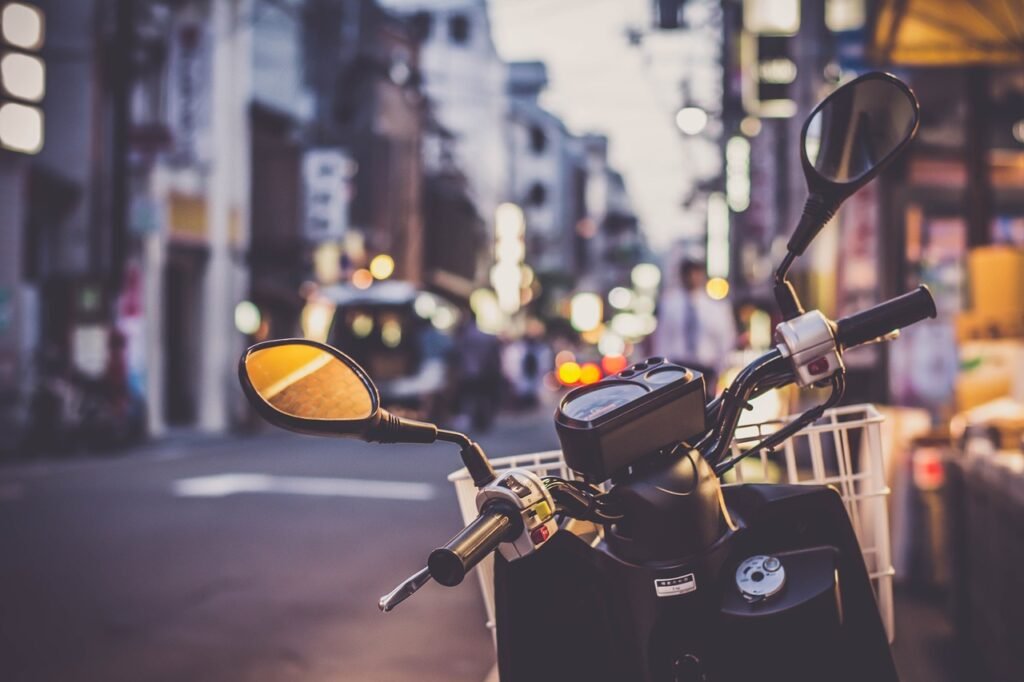
This image is property of pixabay.com.
Check out our product reviews!
Elbow Pads
Elbow pads are essential safety gear that protects your elbows from potential injuries while riding a scooter. Understanding the different types of elbow pads available and choosing the right ones is vital for your safety.
Types of Elbow Pads
Consider these different types of elbow pads:
-
Hard-shell Elbow Pads: Hard-shell elbow pads feature a rigid outer shell made of durable plastic or composite materials. They offer excellent protection against hard impacts and abrasions.
-
Soft-shell Elbow Pads: Soft-shell elbow pads are made of flexible materials like foam or gel. They provide good impact resistance and are more comfortable for extended use. However, they may not offer as much protection as hard-shell elbow pads.
-
Sleeve-style Elbow Pads: Sleeve-style elbow pads have a stretchable sleeve design that easily slips on over your elbows. They provide a secure and comfortable fit without the need for straps. However, they may not offer as much adjustability as strapped elbow pads.
How to Choose the Right Elbow Pads
Consider the following factors when selecting elbow pads:
-
Protection Level: Assess your riding style and the potential risks involved to determine the level of protection you require. For aggressive riding or performing tricks, opt for hard-shell elbow pads for maximum protection.
-
Comfort and Fit: Look for elbow pads that fit snugly around your elbows without restricting your movements. Adjustable straps or closures can ensure a secure and comfortable fit.
-
Durability: Choose elbow pads made of high-quality materials that can withstand regular use and potential impacts. Reinforced stitching, impact-resistant shells, and durable fabrics contribute to the longevity of elbow pads.
Importance of Elbow Pad Fit
Proper elbow pad fit is essential for their effectiveness. Ill-fitting or loose elbow pads may shift or fall off during a fall, leaving your elbows vulnerable to injuries. Conversely, excessively tight elbow pads can restrict blood flow or cause discomfort. Select elbow pads that provide a secure and comfortable fit to ensure adequate protection when riding your scooter.
Elbow Pad Safety Features
Many elbow pads come with additional safety features that enhance their protective capabilities:
-
Padding: Look for elbow pads with thick padding to absorb impacts and provide cushioning for your elbows.
-
Anti-Slip Materials: Elbow pads with anti-slip materials or grip patches on the inner surface help prevent them from sliding or shifting during rides.
-
Ventilation: Opt for elbow pads with breathable fabrics or mesh panels to keep your elbows cool and comfortable, especially during longer rides.
By considering these safety features, you can choose elbow pads that offer optimal protection and ensure a safe scooter riding experience.
Wrist Guards
Wrist guards are crucial safety gear that protects your wrists from potential injuries when riding a scooter. Understanding the different types of wrist guards available and choosing the right ones is essential for your safety.
Types of Wrist Guards
Consider these different types of wrist guards:
-
Splint/Brace Wrist Guards: Splint or brace wrist guards feature a rigid splint or brace that provides strong support and immobilization for your wrists. They offer excellent protection for riders who have previously injured their wrists or need extra support.
-
Soft-shell Wrist Guards: Soft-shell wrist guards are made of flexible materials like neoprene or foam. They provide good impact resistance and are more comfortable for extended use. However, they may not offer as much protection as splint/brace wrist guards.
-
Slip-on Wrist Guards: Slip-on wrist guards have a sleeve-like design that easily slips on over your wrists without any straps or closures. They are simple to put on and take off, but they may not be as secure or adjustable as strapped wrist guards.
How to Choose the Right Wrist Guards
Consider the following factors when selecting wrist guards:
-
Protection Level: Assess your riding style and the potential risks involved to determine the level of protection you require. If you have weak or previously injured wrists, opt for splint/brace wrist guards for maximum support and protection.
-
Comfort and Fit: Look for wrist guards that fit snugly around your wrists without restricting your movements. Adjustable straps or closures can ensure a secure and comfortable fit.
-
Durability: Choose wrist guards made of high-quality materials that can withstand regular use and potential impacts. Reinforced stitching, impact-resistant splints, and durable fabrics contribute to the longevity of wrist guards.
Importance of Wrist Guard Fit
Proper wrist guard fit is vital for their effectiveness. Ill-fitting or loose wrist guards may shift or fall off during a fall, leaving your wrists vulnerable to injuries. Conversely, excessively tight wrist guards can restrict blood flow or cause discomfort. Select wrist guards that provide a secure and comfortable fit to ensure adequate protection when riding your scooter.
Wrist Guard Safety Features
Many wrist guards come with additional safety features that enhance their protective capabilities:
-
Splints or Braces: Wrist guards with rigid splints or braces provide added support and stability to protect your wrists from hyperextension or excessive movement.
-
Padding: Look for wrist guards with thick padding to absorb impacts and provide cushioning for your wrists.
-
Straps: Wrist guards with adjustable straps offer a customizable fit and help prevent them from shifting or slipping during rides.
By considering these safety features, you can choose wrist guards that offer optimal protection and ensure a safe riding experience on your scooter.

This image is property of pixabay.com.
Gloves
Gloves are an important piece of safety gear for scooter riding as they protect your hands from potential injuries and provide a better grip on the handlebars. Understanding the different types of gloves available and choosing the right ones is crucial for your safety.
Types of Gloves
Consider these different types of gloves suitable for scooter riding:
-
Full Finger Gloves: Full finger gloves provide complete coverage for your fingers and hands. They offer the highest level of protection, making them ideal for riders who prioritize safety or ride in colder climates.
-
Half Finger Gloves: Also known as fingerless gloves, half finger gloves leave the fingertips exposed while providing coverage for the rest of the hands. They offer a balance between protection and breathability, making them suitable for warm weather riding.
-
Summer Gloves: Summer gloves are lightweight and often feature perforated materials for enhanced breathability. They are designed to keep your hands cool and comfortable during hot rides.
How to Choose the Right Gloves
Consider the following factors when selecting gloves for scooter riding:
-
Protection Level: Evaluate the potential risks involved in your scooter riding activities to determine the level of protection you require. If you prefer maximum protection, opt for full finger gloves made of durable materials with reinforced knuckles.
-
Comfort and Fit: Look for gloves that fit snugly on your hands without any excess material or discomfort. Adjustable closures or straps can ensure a secure and comfortable fit.
-
Materials and Grip: Choose gloves made of high-quality materials such as leather or synthetic fabrics that offer good abrasion resistance. Additionally, look for gloves with grip-enhancing features like silicone palm prints or specialized grip pads.
Importance of Glove Fit
Proper glove fit is essential for their effectiveness. Ill-fitting gloves can hinder your grip or restrict your hand movements, potentially affecting your ability to control the scooter. Gloves that are too tight may cause discomfort or restrict blood flow, while gloves that are too loose may come off during a fall. Select gloves that provide a secure and comfortable fit to ensure optimal protection and control while riding.
Glove Safety Features
Many gloves come with additional safety features that enhance their protective capabilities:
-
Knuckle Protection: Gloves with reinforced knuckle areas offer extra protection against impacts or abrasions.
-
Palm Padding: Look for gloves with palm padding to provide cushioning and absorb vibrations, reducing fatigue during longer rides.
-
Reflective Details: Gloves with reflective elements increase visibility, especially during low-light conditions or night riding.
By considering these safety features, you can choose gloves that offer optimal protection, comfort, and grip for a safe and enjoyable scooter riding experience.
Reflective Gear
Keeping yourself visible to others on the road is crucial for scooter safety, especially during low-light conditions or at night. Reflective gear enhances your visibility, reducing the risk of accidents caused by other vehicles or pedestrians failing to see you.
Types of Reflective Gear
Consider these different types of reflective gear for scooter riding:
-
Reflective Vests: Reflective vests are highly visible garments made with reflective materials. They can be worn over your regular clothing and provide 360-degree visibility.
-
Reflective Bands/Strips: Reflective bands or strips can be attached to your arms, wrists, ankles, or bag straps to increase your visibility. They are lightweight and easy to use.
-
Reflective Stickers: Reflective stickers can be applied to your scooter, helmet, or any other gear to reflect light and make you more visible to others on the road.
How to Choose the Right Reflective Gear
Consider the following factors when selecting reflective gear:
-
Visibility Range: Look for reflective gear that offers a wide visibility range, ensuring that you can be seen from various angles.
-
Ease of Use: Choose reflective gear that is easy to wear or attach. Items with adjustable closures or adhesive backing provide convenience and versatility.
-
Durability: Opt for reflective gear made of high-quality materials that can withstand outdoor conditions and regular use. Waterproof or weather-resistant options ensure longevity.
Importance of Reflective Gear for Scooter Safety
Reflective gear plays a crucial role in enhancing your visibility on the road, especially in low-light situations. It helps other drivers, cyclists, and pedestrians identify you from a distance, reducing the risk of accidents caused by lack of visibility. Wearing reflective gear ensures that you can ride your scooter safely, regardless of the time of day or surrounding lighting conditions.
Visibility Lights
Visibility lights are an effective way to increase your visibility on the road, especially during low-light conditions or at night. They alert other road users to your presence, reducing the risk of accidents caused by lack of visibility.
Types of Visibility Lights
Consider these different types of visibility lights for scooter riding:
-
Front Lights: Front lights are mounted on the front of your scooter to illuminate the path ahead and make you more visible to others. They help you see potential obstacles and ensure that oncoming vehicles or pedestrians can spot you.
-
Rear Lights: Rear lights are mounted on the back of your scooter to alert others behind you to your presence. They serve as brake lights and make you more visible to drivers or cyclists approaching from the rear.
-
Wheel Lights: Wheel lights are attached to the spokes or rims of your scooter’s wheels. They create a visually striking effect while increasing your side visibility, making you more noticeable to others on the road.
How to Choose the Right Visibility Lights
Consider the following factors when selecting visibility lights:
-
Brightness: Look for lights with high lumen ratings to ensure maximum visibility in various lighting conditions. Adjustable brightness settings can provide versatility for different riding scenarios.
-
Battery Life: Opt for lights with long battery life to avoid frequent charging or battery replacements. Rechargeable lights or those with replaceable batteries offer convenience and cost-effectiveness.
-
Mounting Options: Choose lights that can easily be mounted on your scooter or helmet. Lights with secure attachment mechanisms or multiple mounting options provide flexibility.
Importance of Visibility Lights for Scooter Safety
Visibility lights are essential for scooter safety, especially when riding in low-light conditions or at night. They alert other road users to your presence, significantly reducing the risk of accidents caused by lack of visibility. By investing in quality visibility lights and ensuring they are properly installed, you greatly enhance your safety while riding a scooter.
High-Visibility Clothing
High-visibility clothing, also known as hi-vis clothing, is designed to make you highly noticeable to others on the road. It enhances your visibility, particularly in low-light conditions, and reduces the risk of accidents caused by others not seeing you.
Types of High-Visibility Clothing
Consider these different types of high-visibility clothing for scooter riding:
-
High-Visibility Vests: High-visibility vests are available in vibrant colors like neon yellow or orange with reflective stripes. They are lightweight, adjustable, and easy to wear over your regular clothing.
-
High-Visibility Jackets: High-visibility jackets are designed to provide both warmth and visibility. They are made with bright colors and reflective materials, ensuring that you remain visible in various weather conditions.
-
High-Visibility Rain Gear: High-visibility rain gear combines waterproof or water-resistant materials with high-visibility properties. They keep you dry and visible during wet weather, ensuring maximum safety.
How to Choose the Right High-Visibility Clothing
Consider the following factors when selecting high-visibility clothing:
-
Visibility Properties: Ensure that the clothing you choose has bright, vibrant colors that stand out in various lighting conditions. The presence of reflective materials also significantly enhances your visibility.
-
Fit and Comfort: Look for high-visibility clothing that fits comfortably over your regular clothing without restricting your movements. Adjustable features and breathable fabrics contribute to overall comfort.
-
Durability: Opt for high-visibility clothing made of durable materials that can withstand outdoor conditions and regular use. Reinforced stitching and weather-resistant properties ensure longevity.
Importance of High-Visibility Clothing
Wearing high-visibility clothing is crucial for scooter riders, particularly during low-light conditions or when visibility is impaired. It dramatically increases the likelihood of others on the road spotting you, reducing the risk of accidents caused by lack of visibility. By investing in high-visibility clothing, you prioritize your safety and make yourself highly noticeable to ensure a safe scooter riding experience.
Protective Clothing
Protective clothing is designed to safeguard your body from potential injuries while riding a scooter. It offers added protection and helps minimize the impact of a fall or collision. Understanding the different types of protective clothing available and choosing the right ones is vital for your safety.
Types of Protective Clothing
Consider these different types of protective clothing for scooter riding:
-
Armored Jackets: Armored jackets typically incorporate reinforced padding or armor in critical areas like the shoulders, elbows, and back. They offer excellent protection against impacts and abrasions.
-
Kevlar Pants: Kevlar pants feature protective panels made of abrasion-resistant materials like Kevlar. They provide additional protection for your legs in case of a fall or slide.
-
Protective Suits: Protective suits cover your entire body and are often made of durable materials with built-in armor or padding. They offer comprehensive protection and are commonly used by professional riders or those involved in off-road scooter riding.
How to Choose the Right Protective Clothing
Consider the following factors when selecting protective clothing:
-
Protection Level: Evaluate the potential risks involved in your scooter riding activities to determine the level of protection you require. If you participate in high-speed riding or perform stunts, opt for protective clothing with reinforced padding or armor.
-
Comfort and Fit: Look for protective clothing that allows for freedom of movement and fits comfortably over your regular clothing. Adjustable closures or straps ensure a secure and comfortable fit.
-
Materials and Durability: Choose protective clothing made of high-quality materials that can withstand regular use and potential impacts. Reinforced stitching, durable fabrics, and abrasion-resistant panels contribute to the longevity of protective clothing.
Importance of Protective Clothing for Scooter Safety
Protective clothing provides an extra layer of protection and minimizes the risk of injuries during scooter rides. It acts as a shield against impacts, abrasions, and friction burns, reducing the severity of potential injuries in case of a fall or accident. By investing in and wearing appropriate protective clothing, you prioritize your safety and greatly enhance your overall scooter riding experience.
Shoes
Choosing the right footwear for scooter riding is essential as it directly affects your ability to control the scooter, maintain balance, and prevent potential injuries. Understanding the different types of shoes suitable for scooter riding and choosing the right ones is crucial for your safety.
Types of Shoes Suitable for Scooter Riding
Consider these different types of shoes suitable for scooter riding:
-
Closed-Toe Shoes: Closed-toe shoes, such as athletic shoes or sneakers, provide better protection for your feet than open-toe alternatives. They offer support, grip, and stability, making them suitable for scooter riding.
-
Skate Shoes: Skate shoes are specifically designed for skateboarding but can also be suitable for scooter riding. They typically feature flat soles, reinforced toe caps, and good grip, enhancing your control and balance on the scooter.
-
Motorcycle Boots: Motorcycle boots offer excellent protection and durability due to their reinforced design and impact-resistant materials. They provide ankle support, grip, and additional protection for your feet, making them ideal for more aggressive forms of scooter riding.
How to Choose the Right Shoes for Scooter Riding
Consider the following factors when selecting shoes for scooter riding:
-
Grip and Traction: Look for shoes that offer good grip and traction on different surfaces. A sole with a patterned or textured design can significantly enhance your control on the scooter.
-
Support and Stability: Choose shoes that provide adequate support and stability for your feet and ankles. Shoes with reinforced toe caps or ankle support features offer added protection.
-
Comfort and Fit: Look for shoes that fit properly and do not cause discomfort or restrict your foot movements. Proper fit ensures that your feet are well-supported and allows for better scooter control.
Importance of Proper Footwear for Scooter Safety
Wearing appropriate footwear is crucial for scooter safety as it directly impacts your ability to ride comfortably and maintain control. The right shoes offer grip, stability, and protection for your feet, reducing the risk of accidents caused by foot slippage or inadequate support. By choosing proper footwear, you prioritize your safety and enhance your overall scooter riding experience.
In conclusion, selecting the right safety gear is fundamental for a safe and enjoyable scooter riding experience. Helmets, knee pads, elbow pads, wrist guards, gloves, reflective gear, visibility lights, high-visibility clothing, protective clothing, and suitable footwear all play essential roles in ensuring your safety on the road. By understanding the different types available, considering important factors like fit and comfort, and recognizing the importance of safety features, you can make informed choices that prioritize your well-being. Prioritizing safety and investing in high-quality safety gear will help you enjoy your scooter rides with confidence and peace of mind. Remember, your safety should always be a top priority whenever you hop on your scooter.






